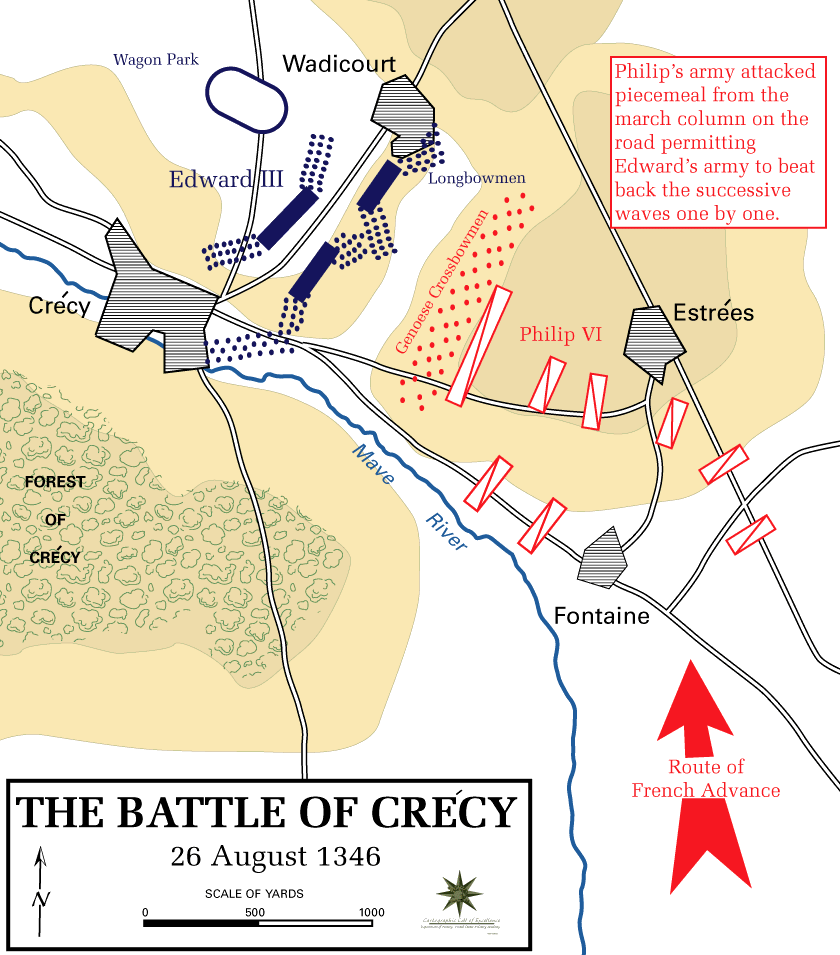The battle of Crécy was fought by the English led by king Edward the third against the French led by Philip the fifth of France. In 1337 the hundred war between England and France began. This war reached its peak in 1346 with sieges and counter-sieges over Aquitaine. Edward the third raised an army of experienced soldiers 10,000 men strong to invade France with more than half of them yeoman archers.
His men left from Portsmouth and landed in Normandy. He was cut off in enemy territory when his fleet got their orders wrong and left prematurely. They had no option but to march north to Flanders which was friendly territory. King Phillip the six had mustered a force which far outnumbered the English army and went to intercept.
Edward discovered that all bridges were either destroyed or to well defended to cross the river Somme. If Edward couldn't get his force across the waterway his troops would be cornered. Edward offered a large reward to anyone who could get them across. Gobin Agache took Edward up on his offer. He guided Edward to the ford at Blanque Taque. Edward happened upon a strong defencive position which would make the most of the barrage of arrows.
The English deployed themselves between the villages of Wadincourt and Crécy-en-Ponthieu. Before the English army was a ridge which gradually fell away to open land and behind the army was a forest. Edward's front line covered the whole of the front slope with 1,800 phalanx and men-at-arms on the right and 800 on the left. Both of those divisions were supported with 1,000 longbowmen. The rest of the longbowmen connected the divisions into a 'v'. The archers were protected from cavalry by pits and spikes driven into the ground. There were 700 men-at-arms a little behind the archers with 2,000 archers on their flanks.

Phillip marched his troops in sight of king Edwards as he wanted to camp with the British in sight but he couldn't control his troops. The French troops were bloodthirsty and would not wait. King Phillip was forced to wage battle that day. Phillip sent out his Genoese mercenaries who were crossbowman first. He did this as he believed that the crossbow was more effective than the longbow. Battle began when the Genoese fired upon the bowman. In return the yeoman archers fired a tornado of arrows on the Genoese crippling and routing them in one volley. The English then fired upon the French men-at-arms in the front row. The French cavalry charged through the mangled and wounded then cut their way through the Genoese and charged up the hill to get at Edward's men-at-arms. They were shot at by thousands of bows as Edward had predicated that the French would attack like that. The French cavalry charged fifteen times and were repulsed every single time.
Photo taken from wikipedia video taken from marshallpoe on youtube.


